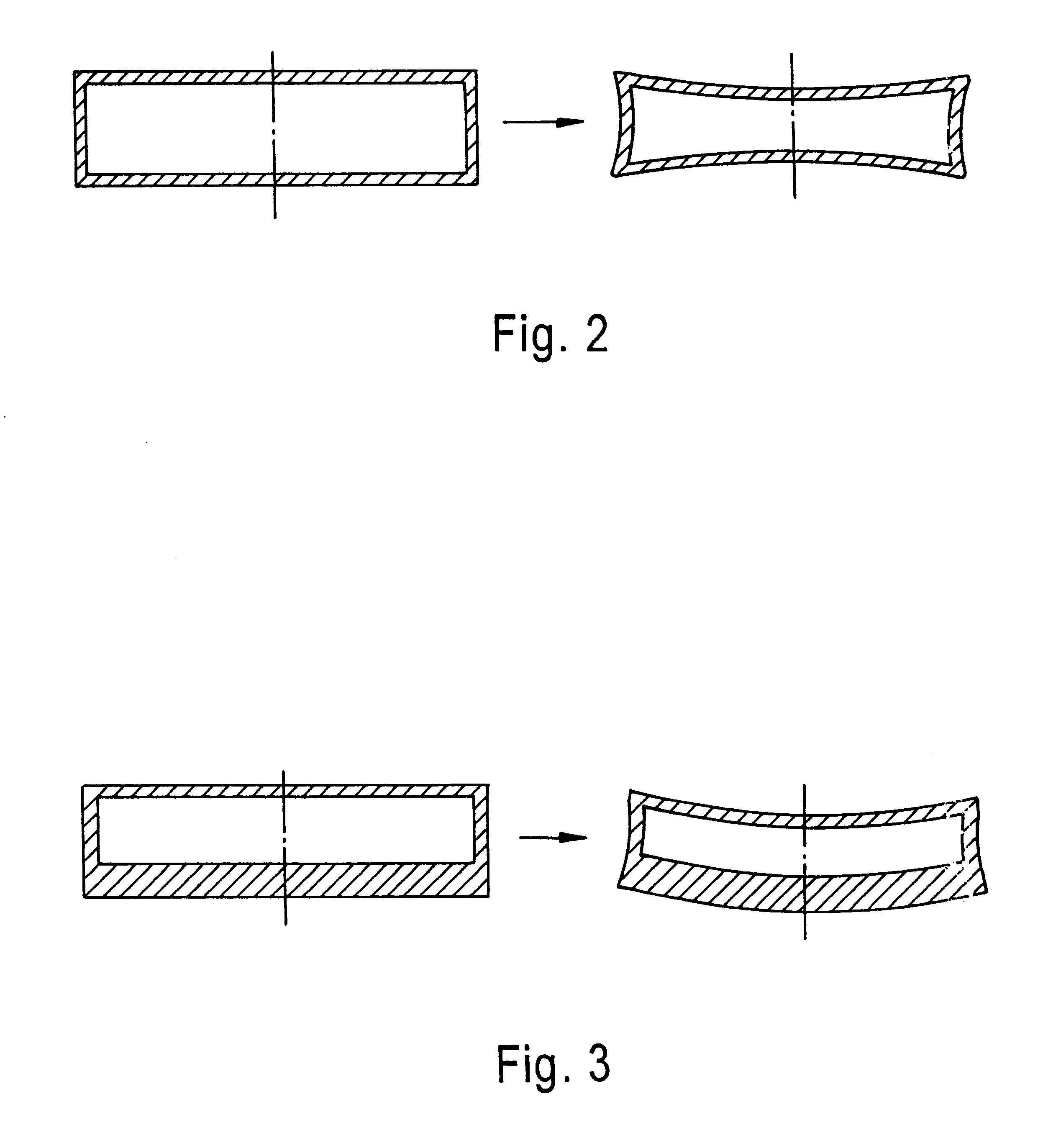Method of manufacturing articles of complex shape using powder materials, and apparatus for implementing this method
a technology of powder materials and manufacturing methods, applied in the field of manufacturing methods, can solve the problems of poor dimensional precision of powder parts, no rigid tools conventional in the traditional process of hot metal forming, and low material yield
- Summary
- Abstract
- Description
- Claims
- Application Information
AI Technical Summary
Benefits of technology
Problems solved by technology
Method used
Image
Examples
Embodiment Construction
FIG. 1 is an axial section view of the capsule consisting of an upper and lower elements 1 and 2 and an insert 3 with slots for powder blades located inside it. The volumes (masses) of material in the upper and lower elements 1 and 2 are equal to each other. Besides the thickness of the upper and lower butt elements 1 and 2 is higher than the wall thickness of the cylindrical part of the above elements.
Increase of radial stiffness of the capsule enables to minimize its radial shrinkage during HIP, to improve dimensional precision of HIPed parts and to avoid distortions like warping and torsion.
Capsule has the main internal volume 4 to be filled with powder for shaping the part. Besides there are additional cavities 5 and 6 made in the capsule elements 1 and 2 and in the insert 3 also to be filled with powder for prevention of local distortions of blades during HIP.
In order to reduce local distortion of the insert 3, its lateral surfaces 7 are made concave.
FIG. 2 is a view of distort...
PUM
| Property | Measurement | Unit |
|---|---|---|
| Thickness | aaaaa | aaaaa |
| Density | aaaaa | aaaaa |
| Volume | aaaaa | aaaaa |
Abstract
Description
Claims
Application Information
 Login to View More
Login to View More - R&D
- Intellectual Property
- Life Sciences
- Materials
- Tech Scout
- Unparalleled Data Quality
- Higher Quality Content
- 60% Fewer Hallucinations
Browse by: Latest US Patents, China's latest patents, Technical Efficacy Thesaurus, Application Domain, Technology Topic, Popular Technical Reports.
© 2025 PatSnap. All rights reserved.Legal|Privacy policy|Modern Slavery Act Transparency Statement|Sitemap|About US| Contact US: help@patsnap.com



